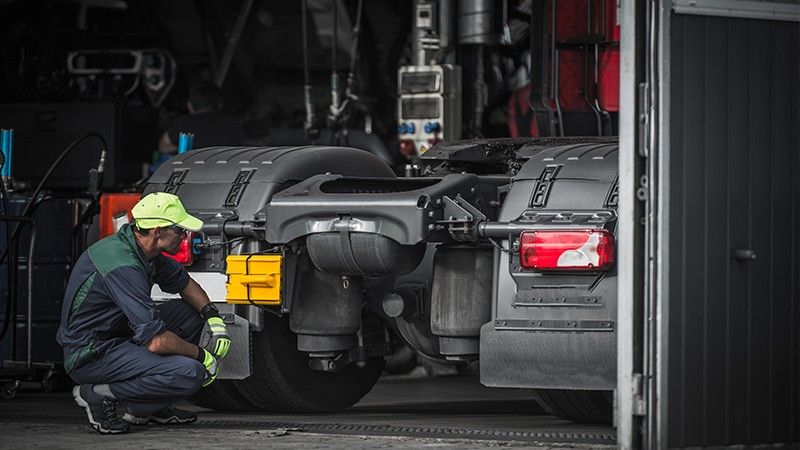Stay connected
Subscribe to our Inside WEX blog and follow us on social media for the insider view on everything WEX, from payments innovation to what it means to be a WEXer.

Snow might be falling in the Northern United States but the leaves are falling elsewhere, a reminder that it is time for autumn cleanup. In the trucking industry that means auditing paperwork, cleaning up files, and managing content for accuracy and compliance to ensure efficient operations and safety on the road. Maintaining fleet compliance can be a cumbersome process, but with a checklist and diligent follow-through, drivers can be confident that they need only focus on the road ahead of them. Best practices for a fleet of any size can satisfy requirements and bolster operations, especially as the demands of winter set in.
Compliance requirementsand regulations come in all forms. Fuel tax solutions, permitting, and ELD mandates may be at the top of the list. Partnering with an expert like EFS/WEX can make all those processes more efficient. EFS’s Fuel Tax solution is a full-service reporting solution that assists in capturing and preparing required IFTA, IRP, and individual state fuel tax reports. EFS/WEX permitting solutions also take the burden off the fleet manager so they can focus on moving the fleet. While partners like EFS/WEX can help in multiple categories of compliance, the Department of Transportation is more complex. Standards are strict and follow-through is vital.
Safety and Security Through DOT Fleet Compliance
The Department of Transportation (DOT) has long issued compliance requirements and regulations for the transportation and logistics industries; they are just a few of the regulations fleet managers need to stay ahead of. While the requirements may demand extra paperwork and resources, those allocations will be well worth the time and expense in case of an audit. Critical best practices that will help satisfy Federal Motor Carrier Safety Regulations (FMCSR) mandates bear repeating. Fleet solutions that meet the standards of DOT compliance are important steps to take as companies will be held accountable.

1. Organize driver qualification files: You need to track each driver’s safety performance history with eight mandatory forms that must be kept in the driver qualification files:
2. Complete daily vehicle inspection reports: Late in 2014, regulations changed such that daily vehicle inspection reports (DVIR) are no longer required when there are no safety defects detected on a vehicle. A driver is not required to prepare the DVIR if, after their post-trip inspection, he or she has identified no safety defects.
3. Take note of the short-haul exception: The short-haul exception, often referred to as the “100-mile rule,” has been applicable for decades but still is not utilized by many carriers that would qualify. This is an exception from the requirement to record hours of service on a graph logs sheet (or now with the electronic logging device, or ELD), and eliminates the need to prepare the electronic logs if the driver can meet certain conditions.
4. Monitor safety performance history: In October 2004, FMCSA mandated that you request a safety performance history (reference check) from all employers for which a driver drove a commercial motor vehicle during the previous three years.
5. Implement effective management control: In 2010 when the Compliance, Safety, and Accountability (CSA) program was implemented, the DOT outlined the principles they consider to be the components of “management control.” For centuries, business management scholars have outlined almost exactly the same principles. There are four critical processes involved in adequate management control:
6. Check your CSA score: CSA scoring is generated from roadside inspection violations (or warnings), accidents, or DOT audits. Monitor these scores closely and note violations as they occur. Drivers must turn in all roadside inspection reports within 24 hours. If there are violations noted, you must certify within 15 days that the repairs have been made or driver issue resolved.

7. Pay attention to preventive maintenance: New engine guidelines now recommend the use of synthetic oils for intervals as long as 50,000 miles. The regulations mandate that a motor carrier “systematically” repair and maintain their vehicles. In the trucking industry, this usually means implementation of a preventive maintenance (PM) program.
8. Organize your PM files: Regarding preventive maintenance files, if you should happen to be the subject of a DOT audit, you can facilitate the process by organizing your files so you can give the auditor what they are looking for quickly.
Along with these DOT practices, it is also good idea to conduct a simulated DOT audit annually to ensure files are up to date and information is accurate. While DOT is only one of the agencies requiring fleet compliance, fleet managers would do well to get ahead of the deadlines by cleaning up paperwork and nailing down fleet solutions now before the winter weather and demanding holiday season are here.
RESOURCES:
Subscribe to our Inside WEX blog and follow us on social media for the insider view on everything WEX, from payments innovation to what it means to be a WEXer.